In the final part of our series on alternatives to traditional light rail, we hear from Revolution VLR, which could reinvigorate unloved branch lines
The Revolution VLR concept first came out of a challenge set by the Department for Transport and the Rail Safety and Standards Board.
In the final part of our series on alternatives to traditional light rail, we hear from Revolution VLR, which could reinvigorate unloved branch lines
- The Revolution VLR is a lightweight, battery-powered rail vehicle designed for low-cost, local line reopenings.
- VLR aims to reconnect communities by operating on segregated branch lines, using private/public partnerships and rapid deployment.
- The technology enables affordable, sustainable rail solutions for the UK and abroad, with trials and orders underway for multiple routes.
The Revolution VLR concept first came out of a challenge set by the Department for Transport and the Rail Safety and Standards Board.
They published a brief for companies to come up with an alternative low-cost lightweight vehicle for the main line.
One of the companies that took up the challenge was award-winning Warwickshire-based road and rail solutions company Transport Design International, now known as TDI Greenway.
The initial phase saw TDI link up with train leasing company Eversholt Rail. Having designed and built the first Revolution VLR (Very Light Rail) vehicle, it was tested just down the road at Porterbrook’s Long Marston Rail Innovation Centre - also home to RAIL’s annual Rail Live event.
It’s an old army base, which has several miles of sidings and a circular track stretching more than three kilometres.
After initial testing at Long Marston, the facility was due to undergo a major refurbishment, which provided an opportunity for TDI Greenway to find and develop a new demonstration facility.
A site in Ironbridge, near Telford in Shropshire, was chosen. It is close to the old Ironbridge coal-fired power station, which had recently been demolished, making way for several new housing developments.
Around the same time, TDI was developing its Greenway Initiative which aims to transform the landscape of mass transit through Very Light Rail vehicle solutions.
The Ironbridge facility ticked all the boxes for its growing ambitions for VLR. There was a branch line in a good state of repair and which passes through a prime development site.
Plans for more than 1,000 new homes were already being developed, showing the potential of VLR’s role in connecting both new and existing communities.
“What we were aiming to do was showcase the vehicle in a potential development area with a line reopening scenario,” says TDI Greenway Commercial Director Darren Smith.
“This gave us an opportunity to demonstrate the rapid speed of deployment for Revolution VLR, in terms of remedial track work to reinstate the line and building a platform, maintenance facility and marketing suite, which could double as a station with ticket office.”
The Ironbridge demonstration facility was opened in 2021 by then-Rail Minister Chris Heaton Harris.
He said at the time: “VLR is new technology that offers a glimpse into the railways of the future. This low-cost, low-emission transport might be the sort of thing you see in your town in years to come.”
And that’s certainly something that’s starting to happen. Since its opening, the company has hosted more than 600 stakeholders from around the world.
Says Smith: “We have had colleagues from the DfT, RSSB, Restoring Your Railway, Network Rail and various train operators, as well as hosting various international trade missions with the Department for Business and Trade. And on every occasion, we have had people who have been surprised at the quality of the demonstrator.”
Following the success of the testing and demonstrations at Ironbridge, TDI Greenway and Eversholt Rail entered into a long-term agreement with an initial order to produce three further Revolution vehicles.
That was back in 2023. At the time Mary Kenny, CEO at Eversholt Rail, said: “This substantial further investment demonstrates our commitment to delivering innovative, sustainable and attractive new rail products for the UK market. We are delighted to be continuing our partnership with Transport Design International.”
The latest batch of VLR vehicles are currently undergoing their final design approval processes, ahead of deployment.
Smith explains: “The first vehicle will go through its factory testing in mid-2026. Then the vehicles are due for release into trial sites through Eversholt Rail later next year and into 2027.”
The new vehicles will weigh around 24 tonnes and carry 56 seated passengers. They’re nearly five metres (or 20%) shorter than a conventional heavy rail carriage.
They will be different from the original demonstrator, which was diesel hybrid. These will be battery-powered, with 60kW hours or 120kW hours of capacity. All vehicles will have regenerative braking systems to capture energy as they slow down.
“The battery operation incorporates fast-charging technology, with no need for overhead catenaries,” says Smith.
“This ensures a remedial level of charge within the batteries to maintain the duty cycle for the vehicle throughout the day, so that there is no need to take a vehicle out of service to recharge the battery.”
The three new Revolution VLR vehicles will be adapted to cater for different terrains and route requirements.
“The differences will be around speed and performance to maximise passenger service durations before you need to charge,” says Smith.
And instead of overhead electrical stations, the plan is to use a third-rail charging system, developed with the support of Innovate UK.
It’s a similar approach to that currently being tested by Great Western Railway at Greenford, in west London. On that branch line, GWR has been trialling the former Vivarail vehicle proposition, which uses recycled London Underground D-Stock trains.
And for deployments in the middle of the countryside, where grid connections might not be powerful enough, there will be an option to use trackside battery storage.
TDI Greenway maintains that this type of battery technology enables a VLR solution to be installed in rural and suburban areas anywhere in the world.
Smith says: “We’ve had a lot of international interest in our VLR electric mobility solutions, including countries who previously thought their electrical grids were too unstable to cope with battery-electric multiple units.”
In addition to the three new vehicles now in production, there is likely to be further orders with an estimate of seven vehicles in total this year.
Smith explains: “The three vehicles being built for Eversholt Rail will go into UK trial sites which they will select. Two vehicles are going to go overseas to routes in North America. And then two more vehicles, as a starting point, to operate on the line that becomes our first ‘Greenway Initiative route’.”
In Revolution VLR, TDI Greenway has created a vehicle that works on segregated lines and will operate with line-of-sight capability.
One of the key features associated with VLR vehicles is that they are not interoperable with main line trains. That is the domain of tram-trains. Instead, they are targeted at local last-mile solutions to supplement main line services.
If the cost of VLR is to be kept competitive, it makes no sense for it to be compatible with main line signalling systems and other heavy rail technology.
There are many branch lines across the UK which are seen as ideal candidates for VLR deployment.
Some were part of the now-defunct Restoring Your Railway (RYR) programme, which was scrapped by the new Labour government when it came into power last year.
Although for many that was seen as a major disappointment, critics of RYR often questioned the previous government’s motives in running the scheme. Many thousands of pounds were handed out for feasibility studies with little hope of the schemes ever gaining the major investment needed to turn them into reality.
Launched in January 2020 under the Conservative government, RYR attracted around 160 schemes, which had to be signed off by MPs after being worked up by local authorities, consultants and campaign groups.
Around 20 were approved for further development, but it was clear that the total budget of around £500 million would do little more than prepare outline proposals for unfunded business cases and perhaps one or maybe two line re-openings at best. Most line reopenings often cost hundreds of millions of pounds.
Now that the dust has settled, some of the most promising projects (including several branch lines) are still being worked on. And perhaps, with the adoption of VLR, these could still see the light of day.
Among the strongest contenders is a line between Gobowen and Oswestry, and another between Newton Abbot and Heathfield.
Smith says: “There are a number of routes around the UK identified by TDI Greenway and Network Rail where VLR would work as a viable solution, so we are now targeting those routes.
“March to Wisbech is a good example of a potential route. The lightweight nature of Revolution VLR means less wear and tear on the track, which gives rise to a lot of benefits when it comes to infrastructure and operational costs.”
Despite the scrapping of the RYR programme, Network Rail’s Rail Connections & Better Value Rail team continues to work with TDI Greenway on potential alternative routes for VLR solutions.
There is still a focus on finding ways of getting people from outlying areas to the main line without using their cars. Those vehicles are currently undergoing their final design approval processes.
And that’s where the Greenway Initiative comes in. It was born out of a recognition that with limited money available for major transport projects, there is a real need to find alternative ways to fund community-led transport and improve local connectivity.
The big idea for TDI Greenway was to try to find a way of funding local rail routes through public/private partnerships.
“We considered: what does a route deployment need? Well, it needs capital expenditure, and then it needs revenue,” says Smith.
The Greenway Initiative plans to use a social enterprise model, where capital expenditure is covered by private investment with local authorities providing the public oversight for each route.
“We’re looking to lease a number of feeder lines from Network Rail which benefits them by taking redundant, disused tracks off their hands, making use of existing resources to reopen rail links across the country to link into main line services and better serve their local communities,” says Smith.
Network Rail’s Programme Director, Railway Reconnections, Mike Smith adds: “Greenway is an important part of our Mixed-Use Rail initiative, which aims to extend the market reach of the whole railway system by integrating heavy rail with tram-train, light and very light rail.
“We must find more cost-effective ways to bring points of entry to the ‘railway system’ closer to a higher proportion of the population, making a rail journey a viable choice.”
TDI’s Darren Smith explains: “TDI Greenway has looked at local commuter numbers and tourism models for our first potential line, and the numbers provide good revenue streams, built up over the first four years to support projected passenger demand profile.”
The remaining possible routes are still fluid, with no firm decisions made on where the first deployments might be.
The company says it is in advanced talks with one local authority, although it’s not able to confirm which one and where the first route might be.
And even before the company has started its first deployment, there are already expansion plans abroad.
In February, the company signed an investment partnership with the Rail Development Corporation (RDC) in the US.
Its pioneering ‘Pop-Up Metro’ solution utilises existing low-density freight rail lines using North America’s only battery-propelled passenger cars.
The deal allows TDI to broaden its VLR horizons and use the Greenway Initiative model elsewhere across the globe.
“It’s great to have their experience on board to expand the VLR market in North America. The opportunities within the US market are significant,” says Smith.
RDC’s Henry Posner adds: “Our business model is based on partnerships. By combining our Pop-Up Metro subsidiary with TDI Greenway, we will gain the breadth and capability to more rapidly advance projects in North America and abroad.
“We have admired TDI’s tenacity, innovation and progress, including its development of the VLR-Revolution vehicle, and believe that we are stronger together. This partnership will accelerate our ability to benefit more communities and host railroads. The clock is ticking.”
Back in the UK, community rail organisations are welcoming moves to reconnect local communities.
Bill Freeman, Interim Chief Executive at the Community Rail Network, says: “The prospect of connecting more communities with the rail network feels a fitting way to mark the 200th anniversary of our railway, as it embarks on its most significant changes for a generation.”
And the Community Rail Network advocates a partnership approach to reopenings. “Whenever and wherever branch lines are reopened, local community rail groups are well placed to be a valued partner in making such initiatives work for everyone,” says Freeman.
“They bring deep insights into the needs and aspirations of their local communities, and can mobilise volunteers to ensure stations along the route are well-kept and well-used.”
On the subject of Very Light Rail, the Community Rail Network doesn’t have a preference on the technology used for reopenings.
However, Freeman says: “If VLR offers a model that improves the business case for line reopenings, then it must be part of the conversation about how we create a more accessible and sustainable rail network that can better meet the needs of more communities.”
TDI and Revolution VLR now seems poised to announce the first deployment, in what could be a long list of schemes designed to reconnect communities that previously lost their links to the main line railway, many because of the Beeching cuts.
The death of the Restoring Your Railway programme has clearly been the catalyst for a much more ambitious and funded programme, focusing on routes where the use of Very Light Rail technology not only makes schemes economically viable, but can also make a big difference to the people and places they serve.
Branch lines left idle or under-utilised could begin life again, and start to play an important role in the local communities they serve.
And if they can persuade people to leave their cars at home, then there would be major environmental benefits, too.
And it’s not just the UK that the Warwickshire company is eyeing up. In addition to North America, there’s interest from places as widespread as Mongolia and Morocco.
The beauty of a VLR-type scheme is that they can be introduced relatively quickly, with reduced costs compared with heavy rail.
Restoring Your Railway promised to reverse the Beeching cuts, but had limited success. Perhaps VLR will succeed where it left off.
Login to continue reading
Or register with RAIL to keep up-to-date with the latest news, insight and opinion.

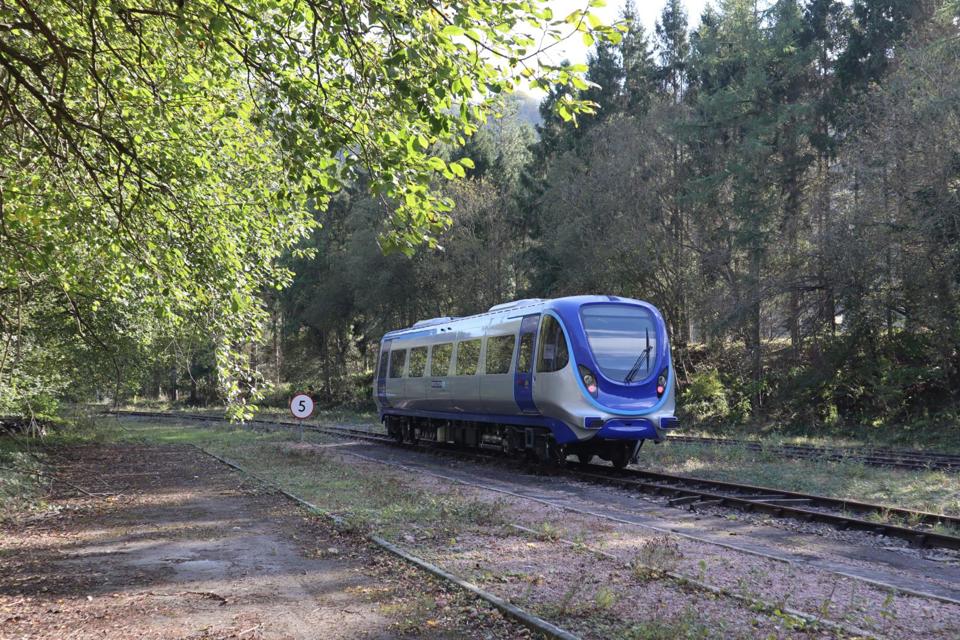

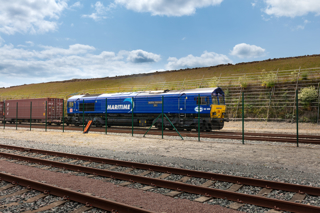


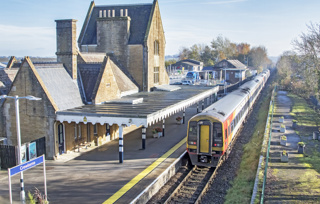
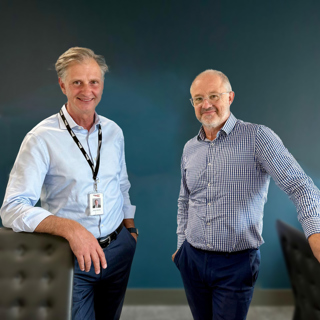
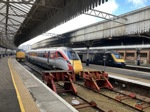
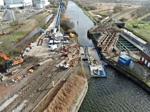
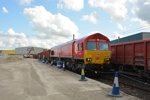
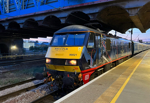
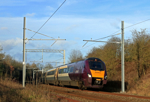
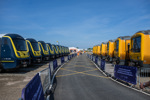



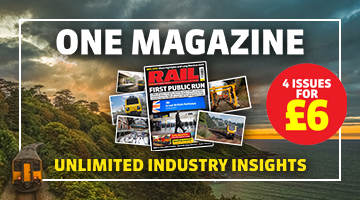

Login to comment
Comments
No comments have been made yet.